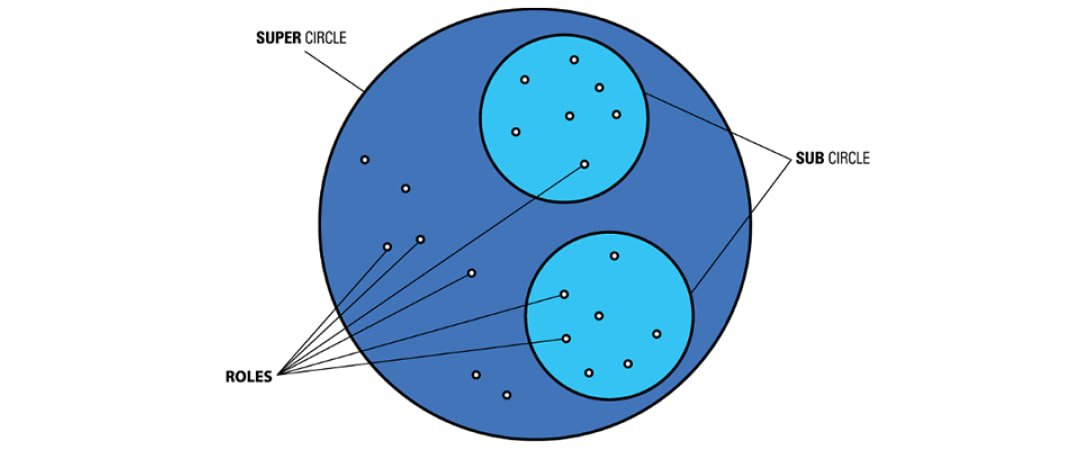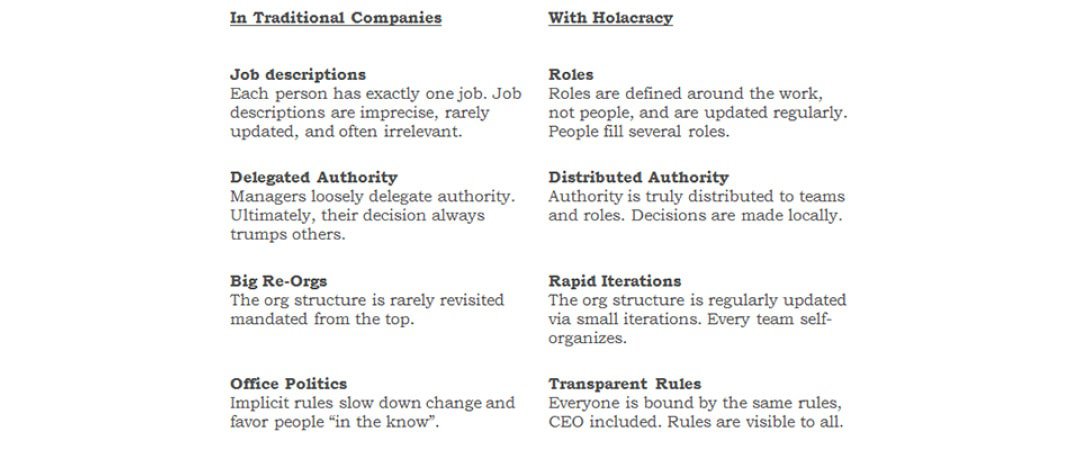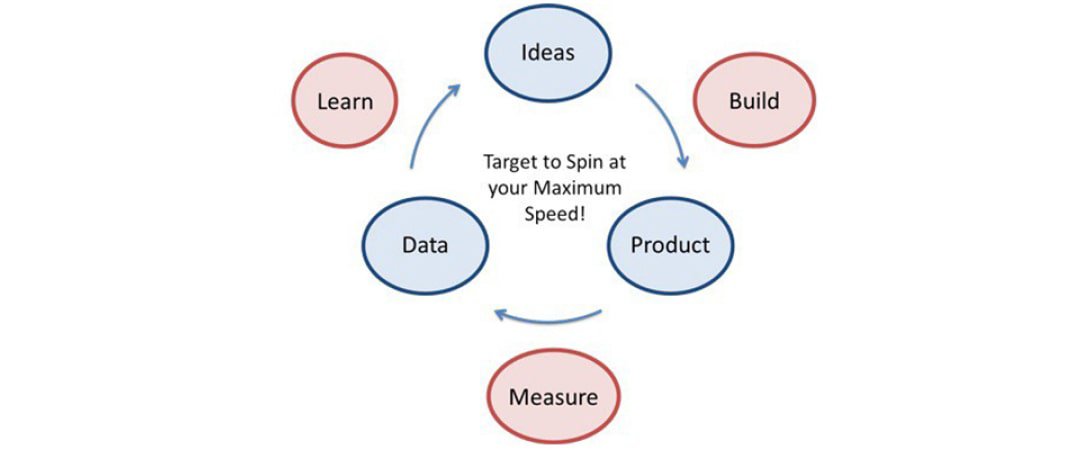The Next Generation Organizations – Part 2
30.07.2019 | Soumyasanto Sen

Frederic Laloux in his Reinventing Organizations mentioned that through the centuries, organizations have made major contributions to humanity’s betterment, including extending life spans, eliminating deadly diseases, making education available, and developing remarkable products and services that improve life and make it more enjoyable. Now organizations dominate the way human society is structured. Read Part 2 of the article “The Next Generation Organizations”.
Holacracy
Started in 2009 by Brian Robertson, this movement replaces the traditional management hierarchy with a “peer-to-peer” operating system that increases transparency, accountability and organizational agility. The movement’s vision is to distribute authority among its teams to empower all employees to take leadership roles and make meaningful decisions.
"The movement’s vision is to distribute authority among its teams to empower all employees to take leadership roles and make meaningful decisions."

Super Circle: Contains sub-circles.| Sub-Circle: Each is dedicated to a function.| Role: A task related to a function.
Holacracy is a self-management practice for running purpose-driven, responsive companies. By empowering people to make meaningful decisions and drive change, the Holacracy practice unleashes your organization’s untapped power to pursue its purpose in the world.

Lean Startup
Lean startup is a methodology for developing businesses and products, which aims to shorten product development cycles by adopting a combination of business-hypothesis-driven experimentation, iterative product releases, and validated learning. The central hypothesis of the lean startup methodology is that if startup companies invest their time into iteratively building products or services to meet the needs of early customers, they can reduce the market risks and sidestep the need for large amounts of initial project funding and expensive product launches and failures.

The lean startup methodology was first proposed in 2008 by Eric Ries, using his personal experiences adapting lean management principles to high-tech startup companies.The methodology has since been expanded to apply to any individual, team, or company looking to introduce new products or services into the market.
“Using the Lean Startup approach, companies can create order not chaos by providing tools to test a vision continuously.”
“The Lean Startup method teaches you how to drive a startup-how to steer, when to turn, and when to persevere-and grow a business with maximum acceleration.”
Lean Startup methodologies states:
Eliminate Uncertainity
The lack of a tailored management process has led many a start-up or, as Ries terms them, “a human institution designed to create a new product or service under conditions of extreme uncertainty”, to abandon all process. They take a “just do it” approach that avoids all forms of management. But this is not the only option. Using the Lean Startup approach, companies can create order not chaos by providing tools to test a vision continuously. Lean isn’t simply about spending less money. Lean isn’t just about failing fast, failing cheap. It is about putting a process, a methodology around the development of a product.
"Lean isn’t simply about spending less money. Lean isn’t just about failing fast, failing cheap. It is about putting a process, a methodology around the development of a product."
Work Smarter not Harder
The Lean Startup methodology has as a premise that every startup is a grand experiment that attempts to answer a question. The question is not “Can this product be built?” Instead, the questions are “Should this product be built?” and “Can we build a sustainable business around this set of products and services?” This experiment is more than just theoretical inquiry; it is a first product. If it is successful, it allows a manager to get started with his or her campaign: enlisting early adopters, adding employees to each further experiment or iteration, and eventually starting to build a product. By the time that product is ready to be distributed widely, it will already have established customers. It will have solved real problems and offer detailed specifications for what needs to be built.
Develop a MVP
A core component of Lean Startup methodology is the build-measure-learn feedback loop. The first step is figuring out the problem that needs to be solved and then developing a minimum viable product (MVP) to begin the process of learning as quickly as possible. Once the MVP is established, a startup can work on tuning the engine. This will involve measurement and learning and must include actionable metrics that can demonstrate cause and effect question.
Validated Learning
Progress in manufacturing is measured by the production of high quality goods. The unit of progress for Lean Startups is validated learning-a rigorous method for demonstrating progress when one is embedded in the soil of extreme uncertainty. Once entrepreneurs embrace validated learning, the development process can shrink substantially. When you focus on figuring the right thing to build-the thing customers want and will pay for-you need not spend months waiting for a product beta launch to change the company’s direction. Instead, entrepreneurs can adapt their plans incrementally, inch by inch, minute by minute.
For more information, visit: www.theleanstartup.com
Responsive Organization
Responsive Organizations are built to learn and respond rapidly through the open flow of information; encouraging experimentation and learning on rapid cycles; organizing as networks of employees, customers and partners, motivated by a shared purpose. This involves several paradigmatic shifts with respect to traditional organizations:
Profit ➔ Purpose: rather than viewing profit as the primary goal of an organization, it is seen a byproduct of success.
Controlling ➔ Empowering: The people with best insight and decision-making ability are often people closest to customers or at the front line. You achieve better results by inspiring and empowering people at the edges to pursue the work as they see fit.
Planning ➔ Experimentation: resources devoted to planning are a less valuable investment than embracing agile methods that encourage experimentation and fuel rapid learning, a long term vision is still needed though.
Hierarchies ➔ Networks: it is no longer necessary true that coordinating through a manager is more effective than people self-organizing as a network with increased autonomy.
Privacy ➔ Transparency: the potential benefits of trusting people who share the organization’s purpose to act on information as they see fit, often outweighs the potential risk of open information being used in counter-productive ways.
A responsive organization is only as good as what it is responding to. And in order to maximize the next generation organization it needs next generation fuel. One of the premises of the future of teams is customer obsession. But how good are we at understanding customers? Are we feeding our organizations coal and oil when their new engine runs on electricity?
"A responsive organization is only as good as what it is responding to."
Read more on What Fuels The 21st Century Responsive Organization?
According to Helge Tennø, Founder and Principal at Jokull AS, we are redesigning our organizations to fit the 21st century. We are configuring them for learning, flexibility and adaptability. To unleash the wealth that is existent in their talents and teams and reap the rewards. But in order to build a responsive organization it needs something to respond to — it needs 21st century fuel.
For more information, visit: www.responsive.org
Missed Part 1? You can find it here. More details of this movement will follow in Part 3.
See also medium.com

